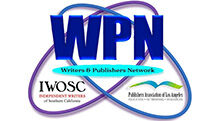 by Bobbie Christmas
by Bobbie Christmas
Q: I am writing a collection of humorous personal experiences. I need advice on how to submit the collection to a publisher. Do I submit one or two chapters or more?
A: The answer depends on the publisher’s guidelines. Some want a proposal and one to three sample chapters. Some want only some sample chapters and a query letter. Publishers vary widely in their guidelines, and you must learn each one’s guidelines for submission and follow those guidelines to the letter.
Investigate publishers that handle your type of book and learn each publisher’s guidelines for submission. If a publisher does not have a website or does not accept unagented material, you’ll need to find an agent first. To find publishers and agents, research through the Internet or subscribe to writersmarket.com or literarymarketplace.com. Follow each agent’s or publisher’s submission guidelines. You may also have to write a book proposal for some publishers. Before you attempt to write a book proposal, read a good book on how to write one. I used Michael Larsen‘s book, How to Write a Book Proposal, and it worked for me.
Q: Should I tell the ending when writing a five-page synopsis for a potential publisher?
A: First, the recommended length for a single-spaced synopsis of a novel is usually one to two pages, rather than five pages, although some publishers accept five. Next, yes, always tell the ending in a synopsis. Teasers—or summaries—don’t tell the ending. They are good only for one-paragraph hooks in query letters or on book jackets. A teaser or summary might read this way: “What happens when a forty-seven-year-old nun falls in love with the new priest in her parish? What if the new priest is only thirty, but he returns her affection? What if the priest disappears without a trace and the nun is the only suspect? Can Sister Marsha Canestraro uncover the truth, avoid church scandal, and uphold her beliefs, all at the same time?”
Unlike a summary, a synopsis tells the plot from beginning to end and adds other details, such as title, genre, and word count. The synopsis, then, might begin this way: In Pop! Goes the Parish, a 57,000-word mystery, Marsha Canestraro, a forty-seven-year-old nun in Woodlands, Vermont, finds herself with a schoolgirl crush on the new thirty-year-old priest. When he disappears, she is a suspect, so she must find out for herself what became of the man she had grown to adore.”
The rest of the synopsis would tell the steps Marsha takes and the information she uncovers, until the truth is revealed. I can’t write the whole synopsis, because I have not finished making up the story. Because I know little about Catholicism and its terminology, I would have to undertake a great deal of research, to be sure my story was plausible and the facts were correct. Those drawbacks aside, let’s get back to the synopsis.
Publishers know a synopsis will not sound exciting or creative; they simply want to know the type of novel, the length of the novel, the basis of the plot, and the resolution, so they can judge the plausibility and marketability of the novel.
Q: Underlines in a typewritten manuscript used to translate to italics in a printed book. That rule was set long before computers allowed us to italicize, though, so I need to know what publishers want nowadays. For example, foreign words and book titles should be italicized, so in a manuscript I submit to a publisher, should I italicize or underline them?
A: When we had only typewriters, we typed words that were to be italicized and then backed up and underlined them. With computers, we can choose between using italics or underlines. I’ve even edited manuscripts in which the same word was both underlined and italicized, which is unacceptable.
Most publishers today want a manuscript to be about as ready as possible for layout, which means words that would be italicized in the book should be italicized in the manuscript. Although some writers think underlines emphasize a word or a heading, underlines have almost no place in today’s books. Nevertheless, I doubt a publisher would reject a manuscript based on this one format issue alone. Whether you italicize or underline, be consistent throughout the manuscript. Don’t underline one word and italicize another, and never, ever italicize a word and underline it too. The two cancel each other out.
Q: Do you have a suggestion for a book I produced in Canada? I have sold 4,000 copies in Canada and am considering submitting it to a U.S. publisher, but I haven’t a clue as to who publishes history books in America.
A: It’s the author’s job to perform the research. Go to bookstores and look for books in your category and see who published it. Pay for one month’s usage of www.writersmarket.com (it’s less than $5/month), search it electronically, and make a list of publishers that publish history and don’t require an agent. If you wish, you can also use the same site to search for agents that handle books on history.
Some publishers won’t take pre-published work, but because yours has a good sales record and great reviews, and because you’re willing to speak and promote it, you may be able find a publisher in America.
Send your questions to Bobbie@zebraeditor.com. Bobbie Christmas, book editor, owner of Zebra Communications, and award-winning author of Write In Style: How to Use Your Computer to Improve Your Writing, will answer your questions quickly. Read more Ask the Book Doctor questions and answers at www.zebraeditor.com.
